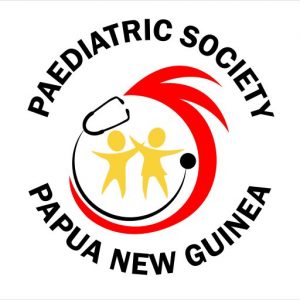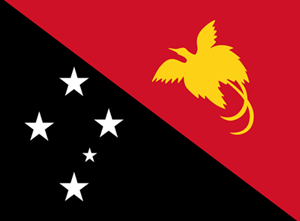Diploma of Child Health
In Popendetta, antibiotic prescribing for children with a common cold or minor upper respiratory tract infection was common, occurring in 82% of 108 cases. Children under the age of 1 year, and those with symptoms longer than 5 days were more likely to be inappropriately prescribed antibiotics. When health workers prescribed antibiotics for the common cold they were less likely to give basic symptomatic advice.
In Vanuatu, 212 children with congenital (166) and rheumatic heart disease (44) were identified between 2010 and 2016. Through a collaboration with New Zealand 61 children underwent surgery in Auckland, with 60 survivors. 20% of the 212 children were on conservative care, many because of inoperable severe pulmonary hypertension from left to right shunts. 12% of the 212 had been lost to follow-up.
In Mendi Hospital and rural health facilities in Southern Highlands, 85 adopted children were identified. 61 were subject of customary adoption, 24 infants were bought, and there were no legal adoptions. Most mothers had no knowledge of legal adoption practices, or of appropriate infant feeding practices, and 53 (62%) were adopted in the neonatal period. Nearly half of the adoptive mothers had no formal education.
In Goroka over 6 months 52 babies with birth asphyxia were identified, with an incidence of 2.4%. They had a case fatality rate of 23%. 67% were delivered by midwives and in 58% of cases no partograph was used. The major predictor of death was a low Apgar score at 5 minutes (Apgar of 5 or less).
In Kimbe, the parents of 20 children with severe malnutrition were interviewed to explore the diversity of the diet given to their children. While most children ate carbohydrates and vitamin A containing food daily, more than half of these children did not have a daily source of protein or other vitamins, and more than half did not have a weekly source of calcium in their diets.
Among 129 children with gastroenteritis and moderate dehydration monitored in the children’s emergency department at PMGH, 63 tolerated oral rehydration and zinc well, taking 25ml/kg of ORS over 2¼ hour of observation without vomiting. All these children recovered with home treatment, and 97% of mothers understood how to give ORS. Of the 66 children who did not tolerate ORS under observation in the CED, all improved with half-strength Darrow’s solution. Outpatient management of children with gastroenteritis and moderate dehydration is safe as long as appropriate safeguards are in place: particularly that the family can access the hospital 24 hours a day, the child has 2-4 hours of observation in ED and tolerates 25-40ml/kg ORS and oral zinc without vomiting, parent education is provided on danger signs and when to return, and the child can be reviewed on day 2.
Among 97 low birth weight babies monitored with the new Bempu wrist bracelet, which is designed to detect neonatal hypothermia, 6 hourly temperatures were taken by thermometer 1491 times. On 124 occasions the babies temperature was measured by thermometer as <36 C. On 102 of these 124 occasions that the neonate had hypothermia the Bempu bracelet had an orange alarm, with a sensitivity (true positive) rate of 82%. All the Bempu bracelets lasted the expected life of 4 weeks, there was a high alert for hypothermia and prompt actions, including swaddling and skin-to-skin warming. Illiterate mothers were able to recognise hypothermia with use of band. The study is ongoing.
Master of Medicine
Among 133 well babies born at term after prolonged rupture of membranes, with a minimal or no antibiotic treatment approach, any signs of sepsis occurred in only 10 (7.5%) in the first week of life, and an additional 3 between 8 and 28 days. There was only one case of proven bacteraemia, and no deaths. Most of the suspected sepsis cases were a transient fever or skin pustules. Minimal use of antibiotics in PROM in well term babies is safe as long as safeguards are in place to monitor for signs of sepsis. In this study nearly 90% of newborns avoided antibiotic exposure and went home at 48-72 hours. This approach can protect against adverse consequences of antibiotics, including overgrowth with resistant organisms and wheezing.
At the National Referral Hospital in Honiara, 62 of 144 children admitted in a 3 month period had some degree of malnutrition. Of the 62, 27% had severe acute malnutrition, 30% had moderate acute malnutrition, 18% had chronic severe malnutrition and 16% had moderate chronic malnutrition. Only 4 children with malnutrition died (CFR 6.5%), after a major campaign to improve the management of malnutrition at NRH, with training, guidelines, monitoring and audit.
Among 97 children with febrile encephalopathy, 5 had Japanese encephalitis, 5 had Dengue, 6 had meningitis due to Streptococcus pneumonia, 1 had meningitis due to Haemophilus influenzae, 6 had malaria, and 19 had suspected tuberculous meningitis. Many aspects of supportive care for children with febrile encephalopathy were frequently not done, including monitoring of blood pressure, blood glucose, anticonvulsant therapy, pupillary assessment and recording, and head elevation to reduce intracranial pressure and prevent aspiration. Other aspects of supportive care were done in more than half the cases, but there was still scope to improve on oxygen administration, Glasgow Coma Score monitoring, recording weight, basic vital signs and providing enteral nutrition.
Among 120 children assessed as having moderate pneumonia at PMGH, outpatient treatment was successful in 92%. 3 patients were recognised as having clinical signs of severe pneumonia on day 1, and admitted. 117 were treated as outpatients with a single dose of benzylpenicillin, followed by oral amoxicillin for 5 days. Three children were admitted on day 2 with signs of severe pneumonia, and on day 6, 2 children were admitted for non-pneumonia causes. In total 15 children were lost to follow-up. 97 children were cured by day 6. There were no deaths. This study shows that outpatient treatment of moderate pneumonia is safe and effective, as long as safeguards are in place. These include: excluding high risk patients (HIV, neonates), checking for danger signs and hypoxaemia using pulse oximetry, a protocol for education of mothers, including teaching about danger signs and when to return (use structured teaching materials and video), and follow-up and reassessment if a child is not improving to detect undiagnosed conditions which may look like moderate pneumonia (TB, congenital heart disease, HIV).
Using the Paediatric Hospital Reporting Program as a tool, the case mix and epidemiology of children admitted to Honiara National Referral Hospital was identified. The study identified the more complex diagnoses not summarised in the summary sheet of the PHR, including the different types of TB, the types of cancer, the different types of neonatal sepsis and congenital malformations, and the comorbidities associated with severe malnutrition (anaemia, infectious complications, and underlying chronic conditions). Key findings included: 25% of all admissions were readmissions, suggesting many children have chronic conditions; the highest CFR was for sepsis in older children (63% died); and just over half the childhood cancers did not receive a proper diagnosis of the cancer type.
Using the Paediatric Hospital Reporting Program as a tool, the case mix and epidemiology of children admitted to Honiara National Referral Hospital was identified. The study identified the more complex diagnoses not summarised in the summary sheet of the PHR, including the different types of TB, the types of cancer, the different types of neonatal sepsis and congenital malformations, and the comorbidities associated with severe malnutrition (anaemia, infectious complications, and underlying chronic conditions). Key findings included: 25% of all admissions were readmissions, suggesting many children have chronic conditions; the highest CFR was for sepsis in older children (63% died); and just over half the childhood cancers did not receive a proper diagnosis of the cancer type.
In a retrospective study describing 5 years of neonatal admissions at Goroka General Hospital, there were over 5176 admissions, of which 82% were born in hospital, 4% in health centres and 14% at home. The overall neonatal mortality rates was 9.7%, and annual CFRs were 8.07% to 13.1%. The highest causes of mortality were low birth weight, birth asphyxia and meconium aspiration syndrome, and neonatal sepsis. In a multivariate regression the significant independent predictors of neonatal death were LBW, health centre birth and village birth. Babies born in HCs and in villages who are referred to EHPH have higher mortality rates than hospital delivered babies who are admitted to NNU, partly because of referral bias (sicker babies are referred).
In a qualitative study of children and adolescents with Rheumatic Heart Disease, the understanding of RDH was explored. Many adolescents knew that RHD affected their heart, and that they needed regular injections, but knowledge among affected patients was often limited. Parents of these children knew they had some sort heart problem, and thought that treatment would make their child better. They showed a sense of trust in doctors, and had a fear of their child missing injections. Because of recent adverse events related to benzathine penicillin injection, and difficulties with syringes being obstructed by powder if not shaken adequately, some clinic health workers were reluctant to give injections. This is a challenge for the RHD program in Solomon.

